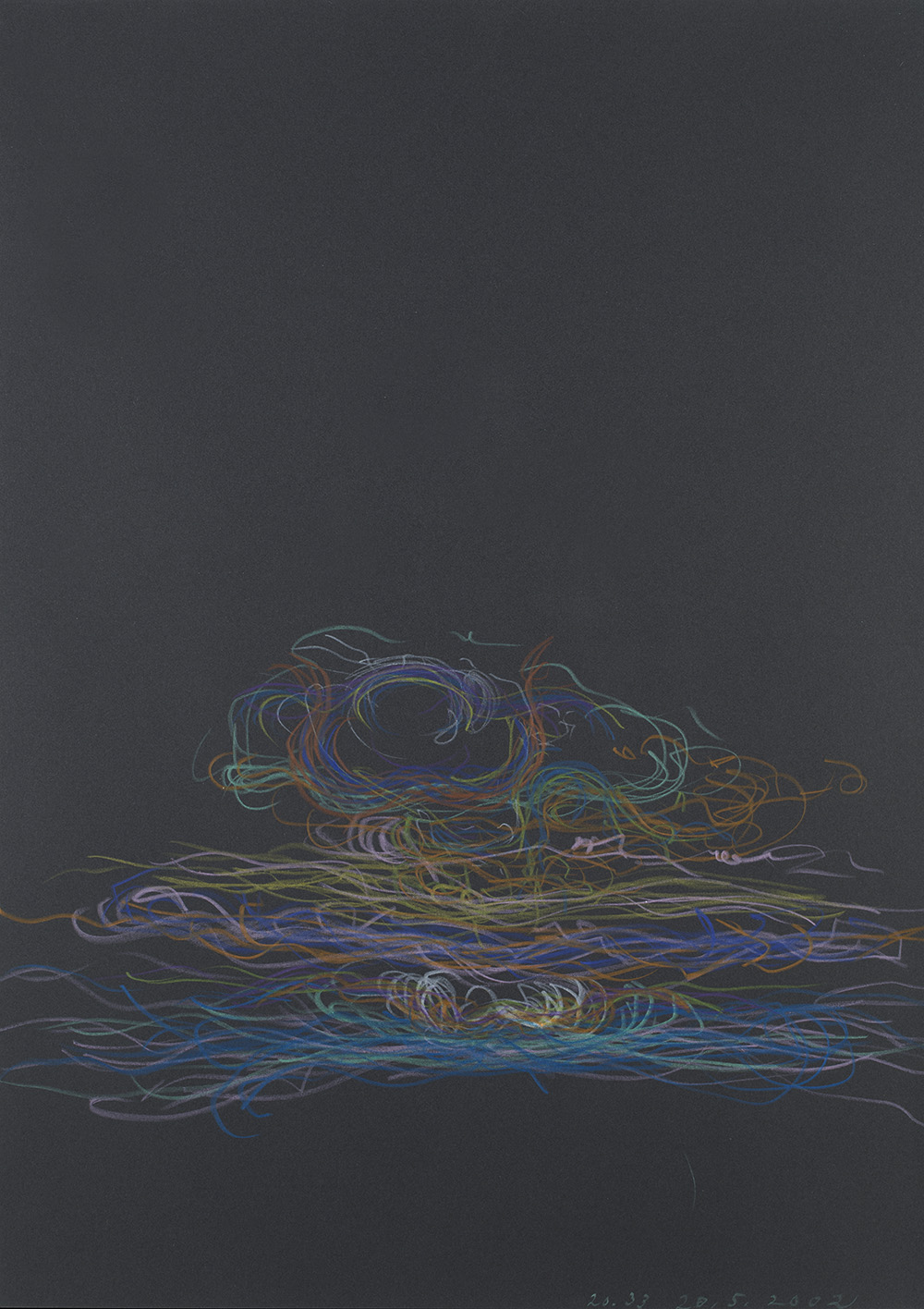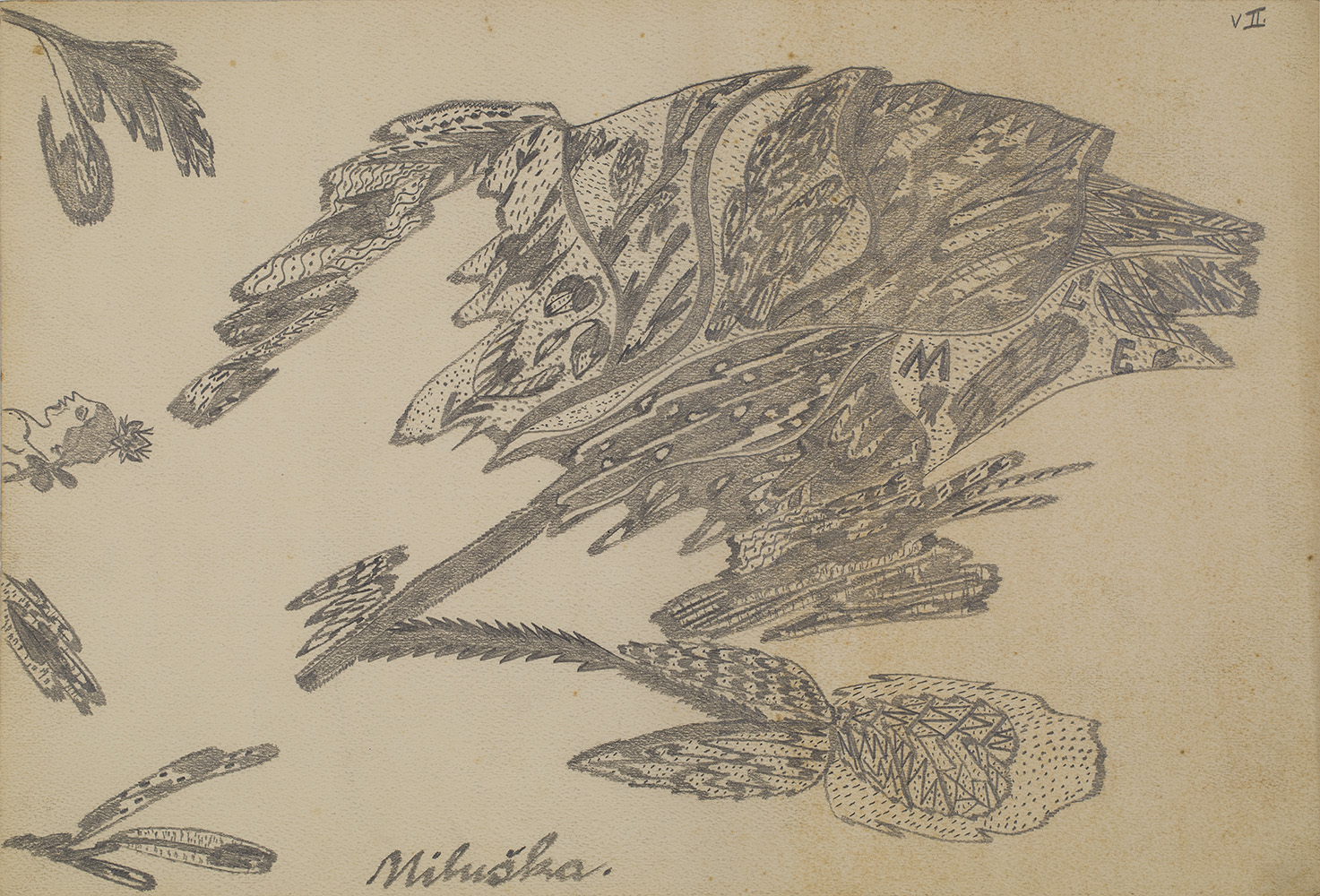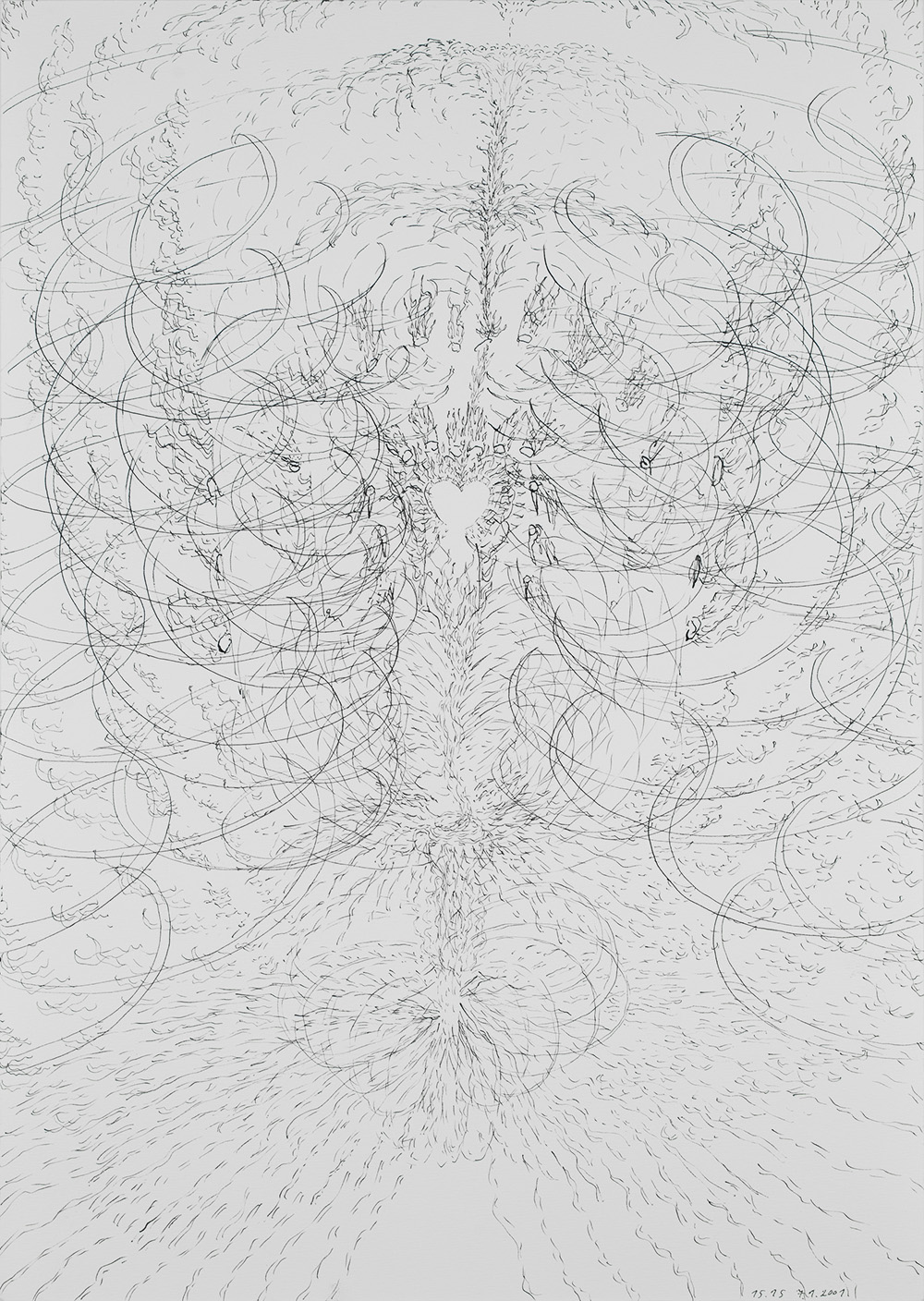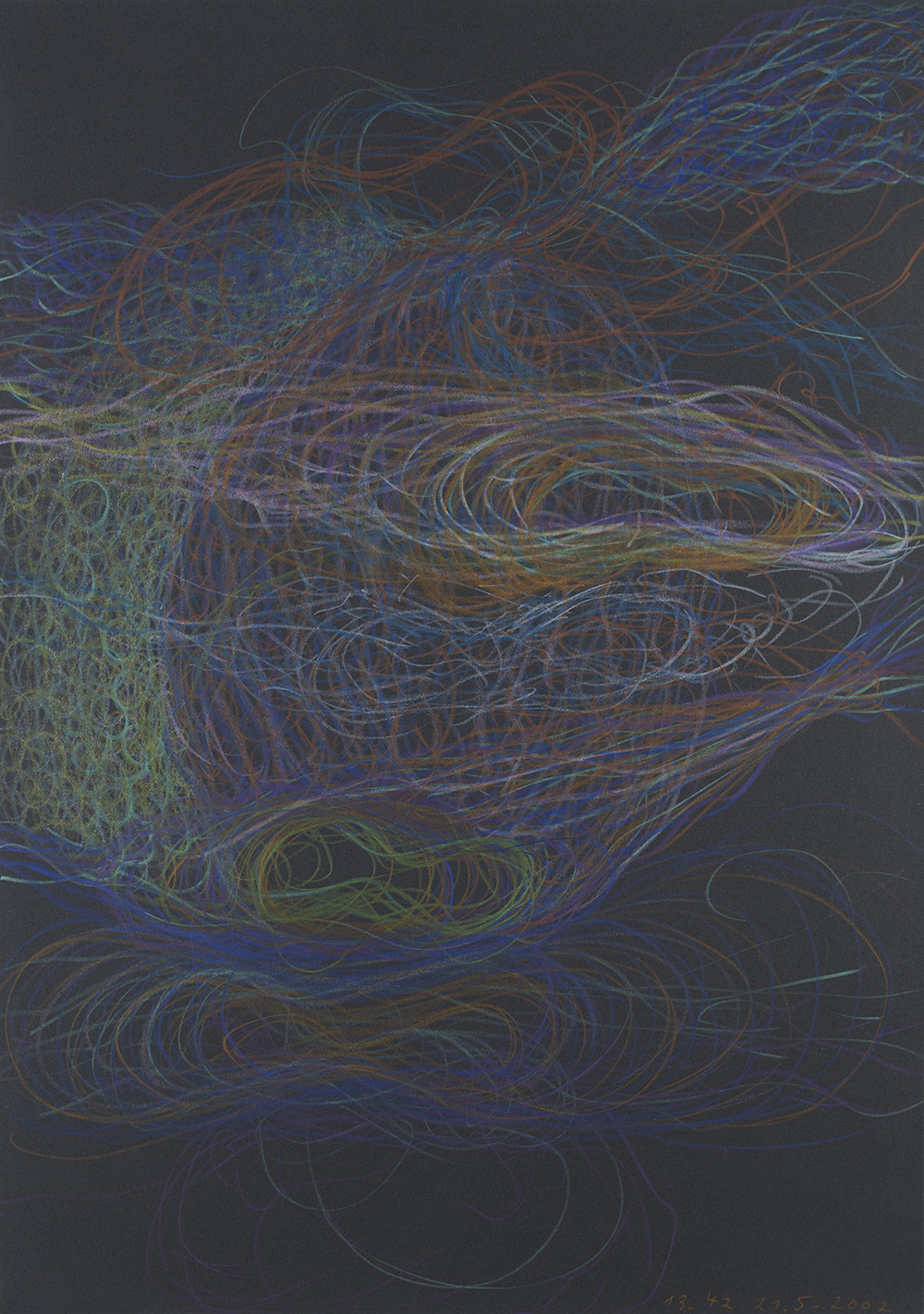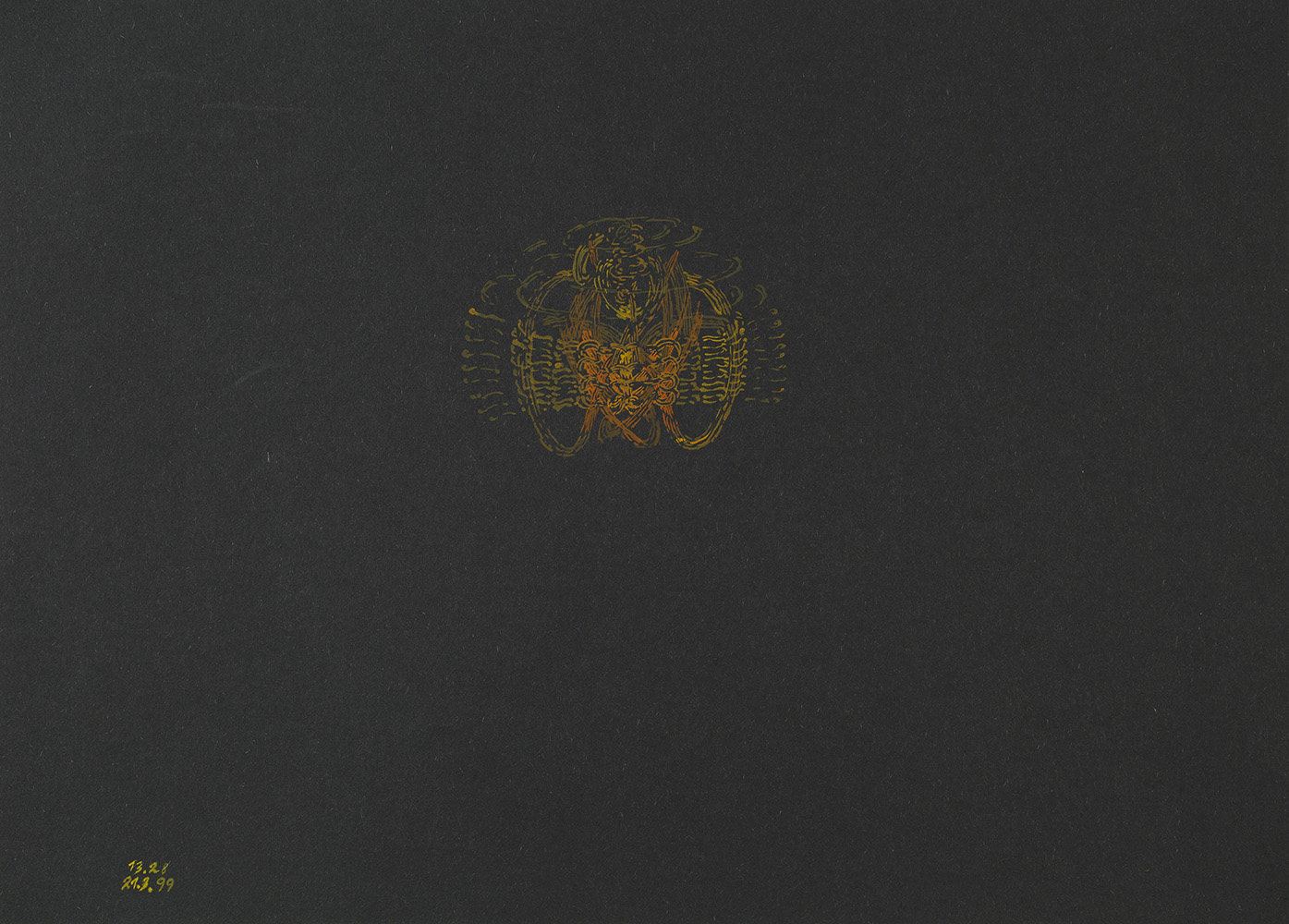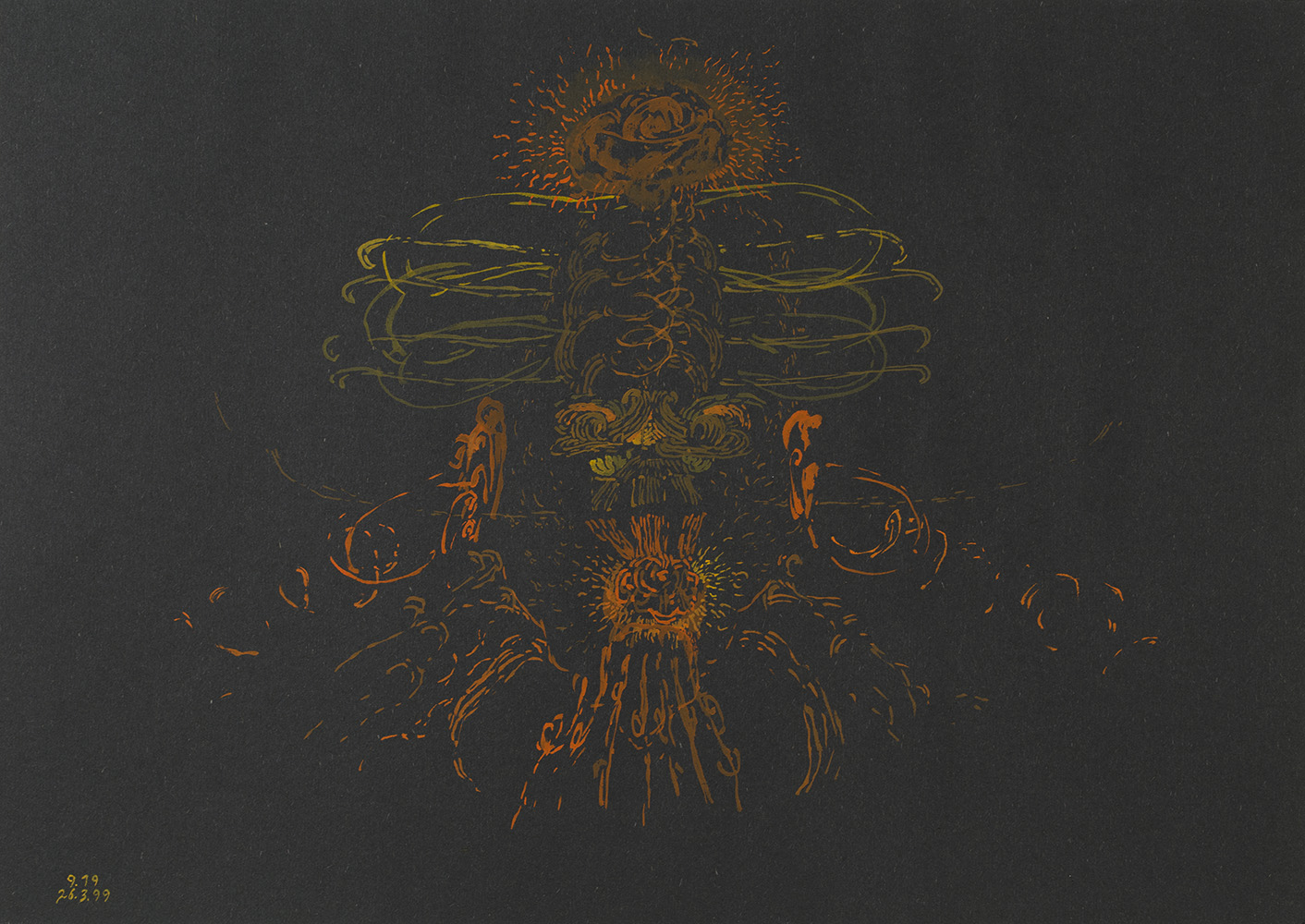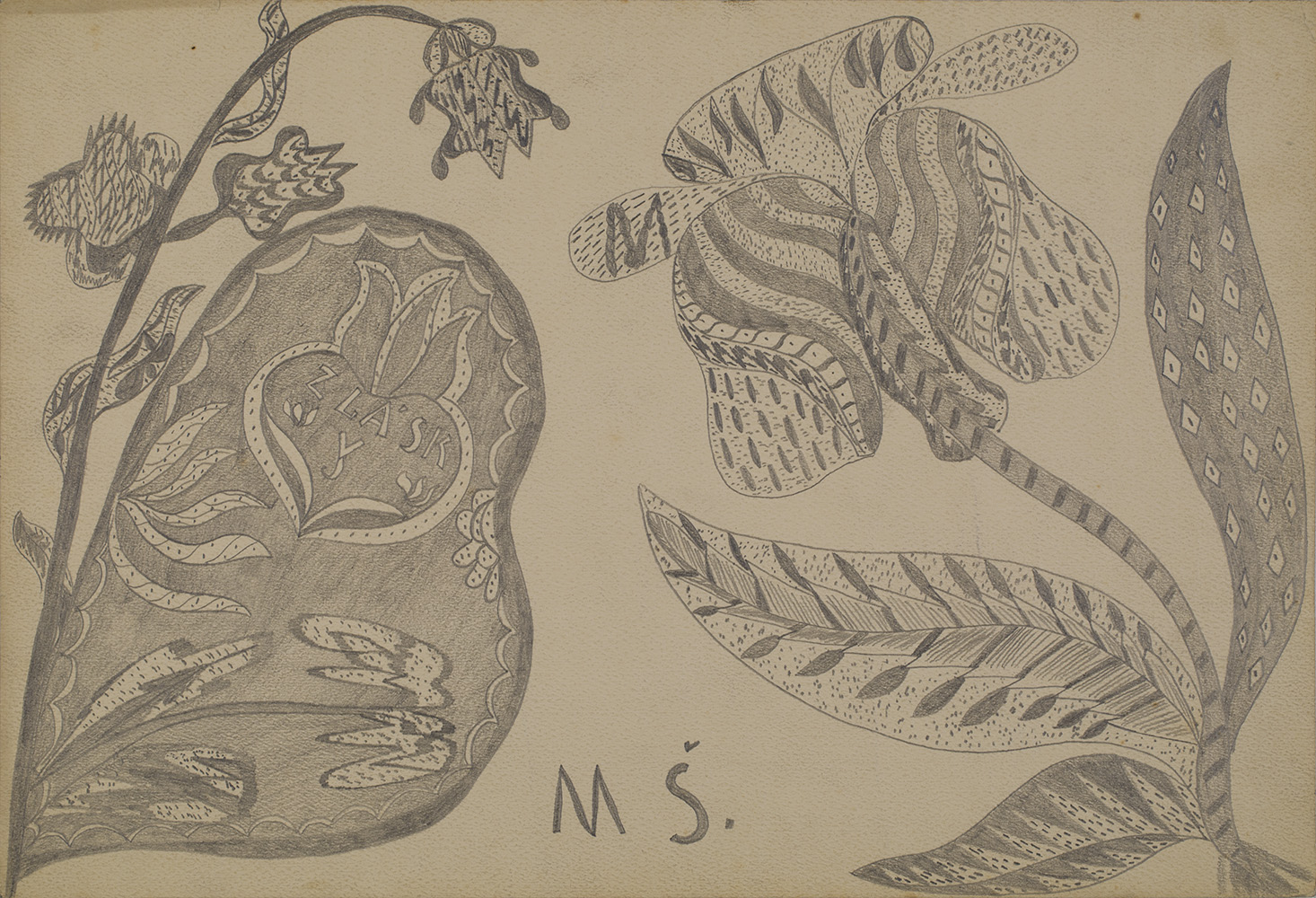ENTITIES: TOMÁŠ LAMPAR & JOSEFA ŠTEPÁNKOVÁ
(March 31 - May 7, 2016)
Cavin-Morris Gallery is pleased to present the spiritualist and visionary work of architect Tomáš Lampar and his spiritualist great-grandmother Josefa Štěpánková.
Lampar's work comes from channeling entities from an undefined alternate state of reality or dimension. His great-grandmother’s work comes from the channeling of people she lost in the course of her life, especially family members with whom she spiritually connected. There is a floral presence in her work that was common to many of the Bohemian and Moravian spiritualists in the late 19th and early part of the 20th Century. Lampar's drawings also resonate with a botanical presence.
Here is what scholar Terezie Zemánková says about Lampar’s process in the catalog essay:
It is the principle behind this botanical vision, where the flower is both the form and the symbol, which Tomáš Lampar shares with his great grandmother Josefa Štepánková. They share the same hypersensitivity, and the ability of “flow-ness”: a power to connect with the entities beyond senses. Their motives for creation differ, however. While the works of Lampar are almost independent from his personal and professional life, the spiritual drawings of Josefa Štepánková reflect her dramatic personal history.
The two different approaches to visionary and spiritualistic imagery make this exhibition compelling. Lampar's work is wild, like unexplained light phenomena in a night sky. His drawings constantly reinvent color in unexpected ways that only accidentally refer to Wassily Kandinsky and Annie Besant. His process involves pulling new variations on what can be done with the innate qualities of the chalks, crayons, pastels and watercolors he uses. Everything he draws is germane to these cross-dimensional entities. Štěpánková's work is more in the language of her culture.
Josefa Štepánková often placed small portraits of her deceased ones into her drawings, or images of their spiritual, amorphous bodies. The faces grow directly from flowers, which sometimes contain messages, declarations or legacies of a religious nature. The leaves and petals are finished with simple details, in keeping with the aesthetics of the 1920s (ornaments of folk art, art deco or echoes of art nouveau).
In the end their messages meet in space, joined by art, fulfilling the function of a vehicle that allows communication between non-material modes of existence -- healing is the hoped for outcome. In doing so each invents a personal yet universal language we can still understand.
We will publish an online catalog with an essay by art historian Terezie Zemánková
For further information please contact Cavin-Morris Gallery at info@cavinmorris.com, or phone: 212-226-3768.
